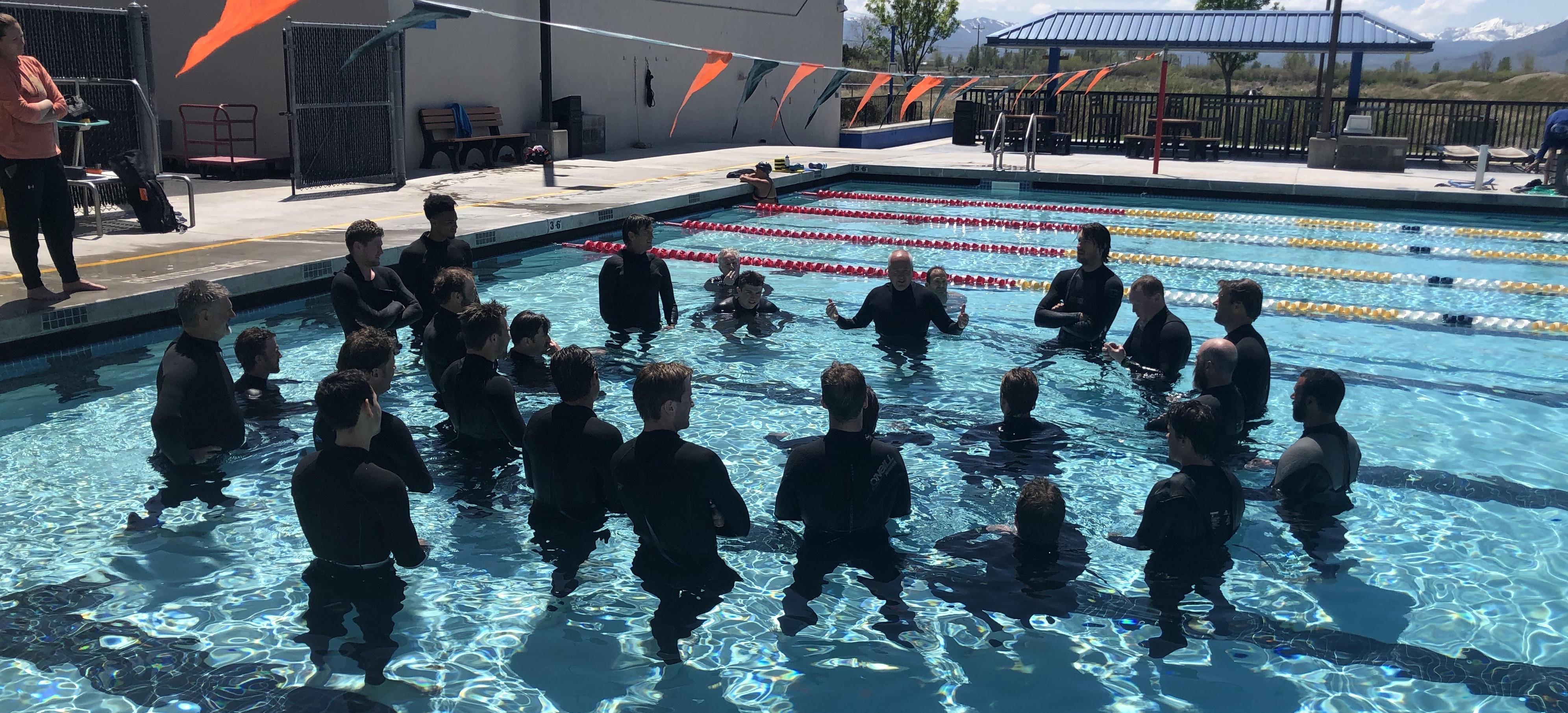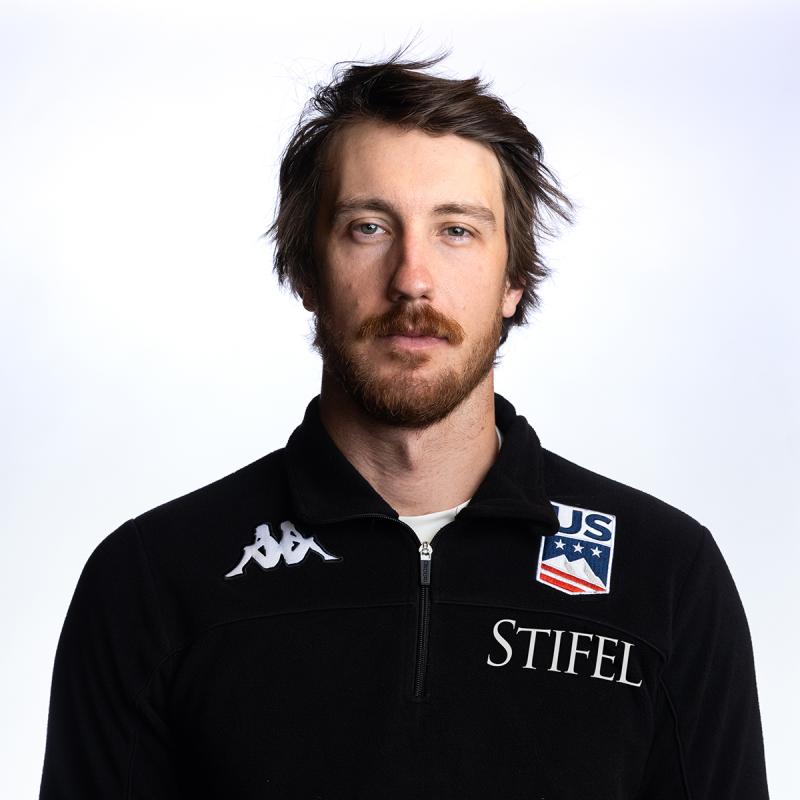The Process of Cultural Shift: Men’s Alpine Ski Team

With a key focus on team culture, the men’s U.S. Alpine Ski Team recently spent three days in California for a team building and testing camp based out of the certified Center of Excellence Barton Center for Orthopedics and Wellness campus in South Lake Tahoe.
Spearheaded by alpine director Jesse Hunt, the three-day camp involved the entire men’s alpine team, as well as coaching staff, and sports science staff - including strength and conditioning coaches and physiotherapists - to unite through physical testing as well as a series of team-building exercises led by Dr. Andy Walshe and his team from Liminal Collective. Prior to Liminal Collective, Walshe was the director of high performance for Red Bull and formerly held the role at U.S. Ski & Snowboard as well.
The topic of culture has been a key area of focus for U.S. Ski & Snowboard, that really started as the result of a discussion led by alpine athletes at the conclusion of the 2018 season at U.S. Alpine Championships with President and CEO Tiger Shaw and Chief of Sport Luke Bodensteiner in attendance. It became apparent to Shaw and Bodensteiner that the athletes saw a need for dialing in culture as a team, creating a stronger relationship between the athletes and support staff in the Center of Excellence in Park City, Utah, and improving communication between athletes and staff.
As an organization, U.S. Ski & Snowboard has made an effort to do a deep dive to understand what was done well and what could be improved. The process of creating a cultural shift can be incredibly challenging, especially when competition and training schedules can be all over the place, but the men’s alpine team made significant progress this spring when they brought the entire squad together in California for this three-day camp.
Though the time spent at certified Center of Excellence Barton Center’s campus was just one of the three days, B Team athlete Sam Morse (Sugarloaf, Maine) said “it was probably one of the most productive days of my career with U.S. Ski & Snowboard. The strength and conditioning, sports science and all of the docs and PTs came over from Park City, and we cranked everything out - all of the testing - physicals, bike test, force plate, concussion testing, etc.” The best part for Morse? It was done as one entire team.
“We were able to do all of that, as an entire team, in the Barton Health facility,” Morse reflected. “And it was sweet. They brought a bunch of our gear from the Center of Excellence in Park City - force plates and lactate bikes - there. I had never been to Barton Health, and I was super impressed. Travis (Ganong) had been telling us about it for a while.” From there, the athletes and staff shifted to another location where they did in-depth Navy Seals-esque work with Walshe and Liminal Collective.
Former men’s head speed coach John McBride did a team building camp with the men’s speed team last summer, working with Walshe and doing breath control and exercises that would require the athletes to work as a unified group. The breath control work was less about actually holding your breath, and more about remaining calm when things get chaotic, which can apply to situations on or off the mountain.
“There were a bunch of presentations, personality tests and discussions around that, and then we did all kinds of team-building exercises including a lot of games that were solid ‘type 2’ fun,” noted Morse. “It was sweet, and I have to commend Jesse Hunt for pulling it all together. Most of the coaching staff was there, and they were doing everything we were doing, and for some of those guys, a lot of that pool work was the most strenuous stuff they’ve done in a while. And they were troopers. I thought it was a really productive camp.”
Men’s alpine athletic development coordinator Michael Bingaman echoed Morse regarding the importance of the breathing work, “...they were teaching us how to find calmness in a high-pressure situation - like, for instance, in the start gate at Kitzbuehel. In those moments, you need to understand your physiology and you need to understand how to calm down or get the right amount of amped up but not over-amped. They taught us skills and then we put them to use in the pool. We were working in groups and teams for all of the exercises - the groups were mixed, and during the 10 different activities, the groups changed. Everyone got a chance to work with everyone, and everyone also got the chance to lead.”
As part of this, the former Navy Seals shared their creed with the athletes and staff, who were able to use the creed as a sort of foundation for creating their own version for the men’s U.S. Alpine Ski Team. Bingaman stressed the weight it carried for the message to be delivered by the Navy Seals - who are the epitome of a high-performing team that has to work together because - for them - it’s life or death.
“In the model they have, they understand very clear roles and responsibilities, they all have each other’s backs,” said Bingaman. “They talked about debriefing, and how anyone can say anything, and it’s not a personal attack. No one comes into debriefing sessions with pride, but rather collectively they want to be the best that they can be, so it is essential that they work through an exercise like that. I think helping the athletes to see what that looks like and what it can look like was influential. It’s tough for our sport - because it’s an individual sport but it’s in a team environment - and the Seals did a good job of relating it to us and showing the athletes why it’s important for us to be a unified team.”
Whereas the speed and tech teams have done similar team building exercises in the past, the difference for this particular one was that all athletes across all teams - A, B and C Teams - and staff were together. The process was collaborative and discussion based and showed all of the athletes the importance of breaking down those barriers and working towards one unified goal.
“It was so nice to have everyone in one room for that exercise, as an entire men’s team,” commented Morse. “It definitely feels like a clean slate/new beginning - with Jesse Hunt at the helm, with A, B and C teams being fully funded, and with this push towards 2026, and the Team being like, ‘These are our guys and we’re going to invest in these guys.’ It just means so much to us, as athletes, to feel supported by the organization. It feels like a profession now in a way that it didn’t before. Everyone who was there is committed to moving forward as a united team, knowing that working together as a team will what make us great as a group.”
In order to create a positive culture, it’s necessary to discuss the more challenging topics and get everything out in the open, and the team did just that - taking time to identify what the “perfect” teammate looks like as well as what the worst qualities are in a teammate. From there, they set up situations that allowed the athletes and staff to role play and work through challenges.
“For instance,” recalled Bingaman, “they got Steven (Nyman), and a couple of younger athletes together it said, ‘Ok, guys - Steven just arrived to the team meeting late. How are you going to handle this?’ That’s what we have to do. We say these things, but then when it comes to a real world situation, the guys are going to have put it into practice. Some of the athletes even discussed real issues that occurred during the season and they sat down and worked through the situation in front of everyone, and it went super well. That was great.”
The power of a three-day camp focused on building a more positive team culture where the athletes could take ownership and lead, was vast. “Maybe the coolest piece was that - at the end of that day - we were in a massive circle and we all went around one by one and said what our takeaways were. It was really cool to see the older guys like Travis (Ganong) and Bryce (Bennett) really into it - and how they were so passionate about where the team was going and how they wanted everyone to be on the same page. I think it made us realize that, if we as a staff, can step back and let the athletes take ownership and lead, they’re going to do something amazing.”
With numerous men’s alpine athletes in a position to win at every level, this cultural shift may just be the final ingredient in getting them back to the top.


